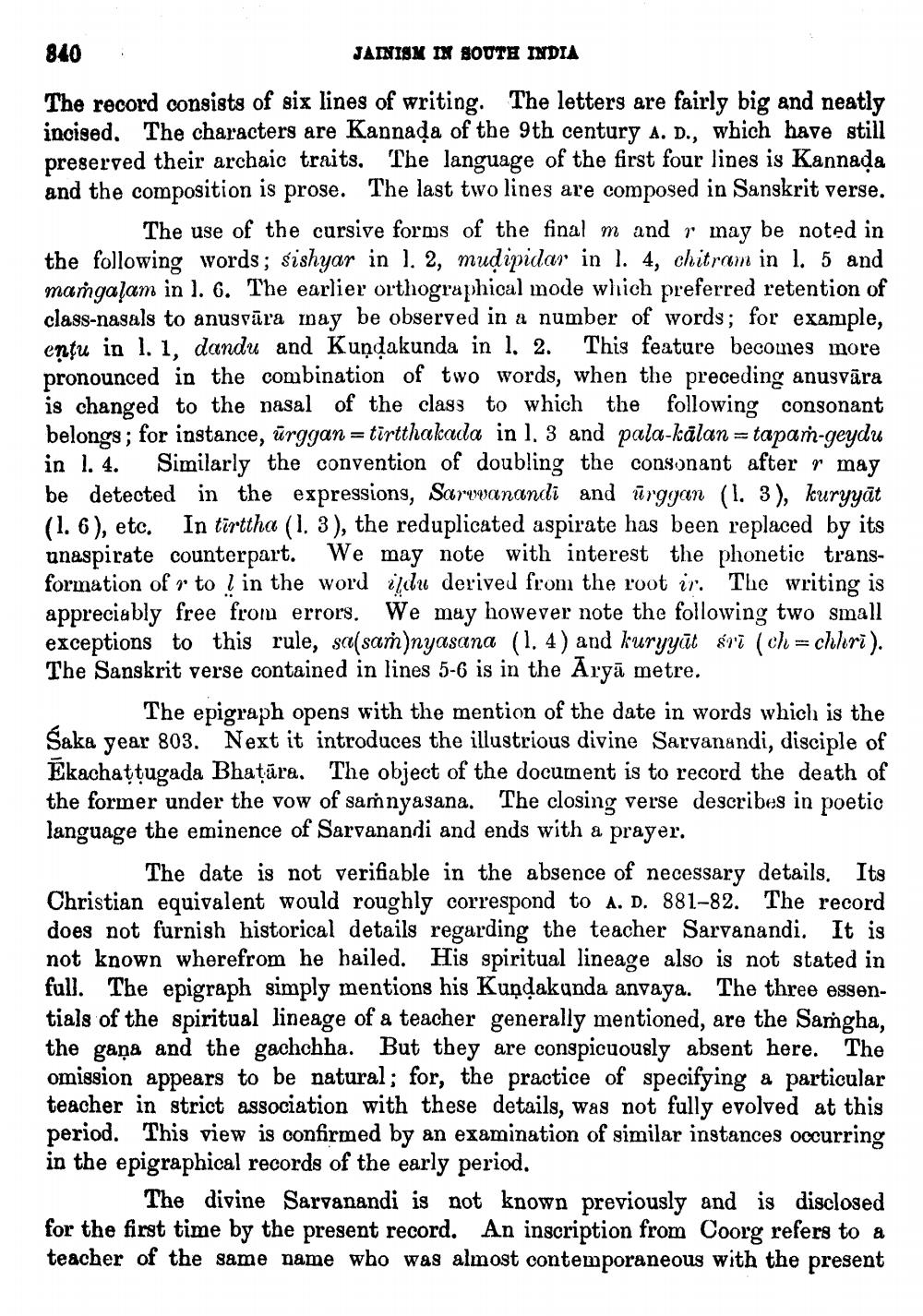________________
840
JAINISM IX BOUTE INDIA
The record consists of six lines of writing. The letters are fairly big and neatly incised. The characters are Kannada of the 9th century A. D., which have still preserved their archaic traits. The language of the first four lines is Kannada and the composition is prose. The last two lines are composed in Sanskrit verse.
The use of the cursive forms of the final m and , may be noted in the following words; sishyar in 1. 2, mudipidar in l. 4, chitram in l. 5 and mangaļam in l. 6. The earlier orthographical mode which preferred retention of class-nasals to anusvāra may be observed in a number of words; for example, entu in l. 1, dandu and Kundakunda in l. 2. This feature becomes more pronounced in the combination of two words, when the preceding anusvāra is changed to the nasal of the class to which the following consonant belongs; for instance, ürggan = tirtthakada in 1. 3 and pala-kälan = tapaṁ-geydu in l. 4. Similarly the convention of doubling the consonant after g may be detected in the expressions, Saruvanandi and ürggan (1. 3), kuryyāt (1.6), etc. In tīrttha (1, 3), the reduplicated aspirate has been replaced by its unaspirate counterpart. We may note with interest the phonetic transformation of r to l in the word ildu derived from the root ir. The writing is appreciably free from errors. We may however note the following two small exceptions to this rule, salsaṁ)nyasana (1. 4) and kuryyat sii (ch=chliri). The Sanskrit verse contained in lines 5-6 is in the Aryā metre.
The epigraph opens with the mention of the date in words which is the Saka year 803. Next it introduces the illustrious divine Sarvanundi, disciple of Ekachattugada Bhatāra. The object of the document is to record the death of the former under the vow of saṁnyasana. The closing verse describes in poetic language the eminence of Sarvanandi and ends with a prayer.
The date is not verifiable in the absence of necessary details. Its Christian equivalent would roughly correspond to A. D. 881–82. The record does not furnish historical details regarding the teacher Sarvanandi. It is not known wherefrom he hailed. His spiritual lineage also is not stated in full. The epigraph simply mentions his Kundakunda anvaya. The three eggentials of the spiritual lineage of a teacher generally mentioned, are the Saṁgha, the gaña and the gachchha. But they are conspicuously absent here. The omission appears to be natural; for, the practice of specifying a particular teacher in strict association with these details, was not fully evolved at this period. This view is confirmed by an examination of similar instances occurring in the epigraphical records of the early period.
The divine Sarvanandi is not known previously and is disclosed for the first time by the present record. An inscription from Coorg refers to a teacher of the same name who was almost contemporaneous with the present




